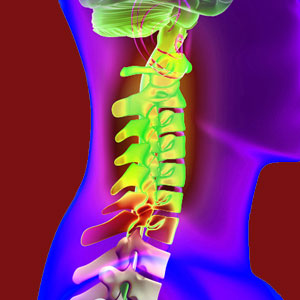
Facet joint nerve pain can consist of pain originating from within the joint or pain caused by compression of a spinal nerve root within the foraminal space. All pain is experienced through nerves, but in some cases, the pain is actually sourced in the nerve, such as in compression and chemical irritation scenarios. The diagnosis of facet joint syndrome is a classic nerve pain condition.
Facet joint pain suffers from a high rate of misdiagnosis, mostly due to the universal nature of structural changes affecting these spinal joints with age. However, when pain is originating in the joint or caused by facet bone spurs, medical care is both necessary and indicated.
This essay details the occurrence of nerve pain in and around the spinal facet joints and discusses the 2 main expressions of such symptomology.
Facet Syndrome Nerve Pain
Facet joint syndrome is a diagnosis that theorizes pain to be the result of compression and chronic irritation of small nerves within the facet joints themselves. Typically, these nerves are suspected of suffering compression and irritation due to mechanical breakdown of the protective measures within the joint due to age, activity and resulting arthritis.
These nerves are small, so the symptoms should be localized and mild to moderate, typically flaring up upon mobilization of the affected joint. In some cases, osteophyte growth might also cause mechanical pain or dysfunction in the joint, such as reduced range of motion or even a completely frozen joint.
In facet joint syndrome, symptoms should exist over the spine, in a limited area corresponding to each affected joint. Pain is rarely present when the affected spinal level is not mobilized and when present, severity is generally controllable using conservative methods of care in most patients.
It should be known that the same facet joint changes often diagnosed as leading to facet joint syndrome are actually completely normal and universally observed parts of spinal aging. In most people, these changes will never become problematic or symptomatic to any significant degree.
Facet Joint Pinched Nerve Pain
Alternatively, nerve pain and related symptomology like tingling, numbness and weakness can be caused by changes in the facet joints, but expressed elsewhere in the body when a compressive neuropathy exists. These scenarios are not actually considered facet joint pain, but instead a form of foraminal stenosis enacted partially or wholly by osteophytes which grow externally on the joints and lead to a reduction in the patency of the foraminal openings.
Pinched nerves may or may not be painful at the site of occurrence in the spine. Some are symptomatic for a short time, but almost all will stop signaling pain within a relatively short timeline. Instead, typical chronic symptomology will consist of tingling, numbness and weakness in areas of the body which are innervated by the compressed neurological tissue.
Of course, both types of nerve pain can exist together, leading to a more diverse symptomatic expression. In these cases, it is important to recognize both types of pain being present, since treatment is very different from one type to the other.
Facet Joint Nerve Pain Solutions
If the diagnosis of either type of nerve pain is accurate, then relief should be relatively easy to provide using conservative care or invasive care. Most conservative methods of treatment will focus on reducing the severity of the symptoms and are therefore better indicated for facet joint syndrome. In cases of neurological dysfunction caused by a pinched nerve, curative care is best suited and can be performed using surgery or nonsurgical spinal decompression treatment.
It should be made abundantly clear to all patients that both types of pain are commonly mistakenly diagnosed, leading to failed treatment and possibly unsuccessful surgery. Before pursuing any type of care, it is best to verify the accuracy of the diagnosis by getting a second or even third opinion.
To learn more about various types of indicated therapies for these nerve pain disorders, please enjoy our resource sections covering facet joint treatment and facet joint surgery. Be sure to understand the difference between symptomatic care and curative care before deciding on the best therapeutic path for your specific condition and pain profile.
Facet Joint Pain > Facet Joint Symptoms > Facet Joint Nerve Pain





